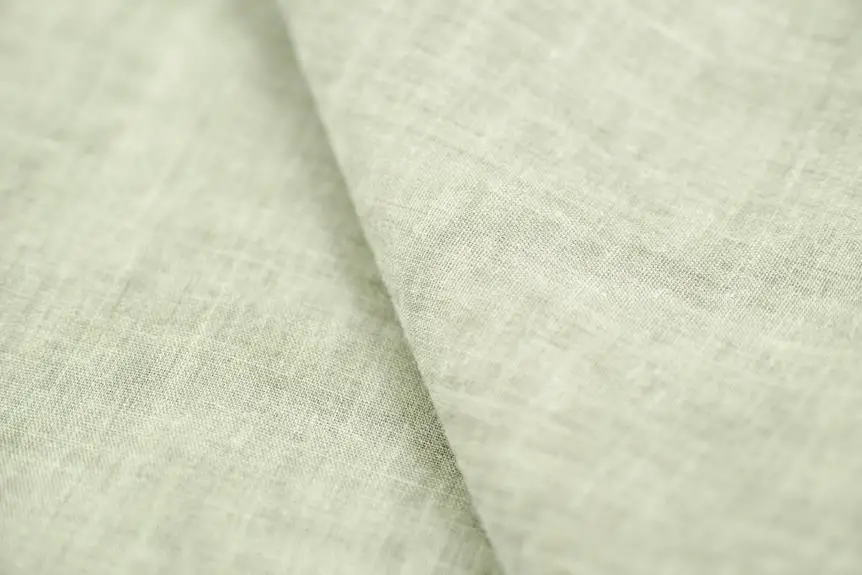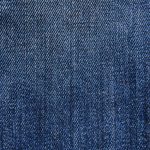When you're choosing between ring spun and combed cotton, you might be wondering about their softness and overall feel. Ring spun cotton is crafted through a unique spinning process that enhances the smoothness of each fiber, making it quite comfy. On the other hand, combed cotton goes through an extra step to remove shorter fibers, resulting in an exceptionally soft texture. But how do these processes stack up against each other when it comes to your comfort? The nuances of each might surprise you, particularly regarding their applications and longevity.
Table of Contents
Overview of Cotton Types
Cotton comes in various types, each with unique characteristics that impact texture, durability, and overall quality.
You'll find the most common types include upland cotton, Egyptian cotton, and Pima cotton. Upland cotton is widely used due to its affordability and versatility. It's durable but mightn't feel as luxurious compared to others.
On the other hand, Egyptian cotton is prized for its long fibers, which lead to finer, softer fabrics. If you're looking for something high-end, Egyptian cotton is often your best bet. Pima cotton is also an excellent choice, known for its exceptional softness and sheen, making it ideal for premium products.
While each type has its strengths, understanding the differences helps you make informed choices. For example, if you prioritize comfort and softness, you might lean towards Egyptian or Pima cotton. If durability and cost are more important, upland cotton might be suitable.
In the end, each type serves a unique purpose, and knowing what you prefer can enhance your experience, whether you're purchasing sheets, clothing, or towels. The right cotton type can make a noticeable difference in how your products feel and last over time.
What Is Ring Spun Cotton?
Ring spun cotton is made through a unique manufacturing process that spins the fibers together, creating a stronger and more durable yarn.
You'll notice it has a softer texture and a smoother feel compared to other cotton types.
Let's explore those differences in detail.
Manufacturing Process Differences
In the manufacturing process of ring spun cotton, individual fibers are twisted and drawn together to create a finer, stronger yarn. This method involves spinning the fibers by continuously drawing them through a series of rollers, which aligns the fibers more evenly.
As the process progresses, the fibers are tightly twisted, increasing the yarn's strength and durability. You'll notice that this intricate process takes longer than conventional spinning methods, but it offers significant benefits for the final product.
On the other hand, combed cotton goes through a different process. Initially, the fibers are carded to separate and clean them, but then they undergo an additional step: combing.
Combing removes shorter fibers and impurities, resulting in a smoother and more uniform length. While this results in soft, high-quality yarn, it doesn't include the same twisting process that characterizes ring spun cotton.
Texture and Feel Comparison
When you touch ring spun cotton, you'll instantly notice its luxurious softness and smooth texture, a result of the careful spinning and twisting process that enhances both comfort and durability.
This cotton is made by twisting and thinning the fibers, which removes shorter strands and results in a tighter, more even yarn. You'll appreciate how this method creates a fabric that feels softer against your skin compared to other types.
In contrast, combed cotton is also soft, but the texture can sometimes feel denser due to the additional combing process used to eliminate impurities.
Combed cotton fibers are longer, making it smoother, but it may not provide that gentle draping sensation you get with ring spun cotton.
When wearing garments made from ring spun cotton, you'll likely notice better breathability and a more comfortable fit.
The exceptional softness of this fabric can make it a preferred choice for those who prioritize comfort, especially in everyday wear like t-shirts and bed linens.
What Is Combed Cotton?
Combed cotton is a type of cotton that undergoes a special combing process to remove impurities and shorter fibers.
This results in a smoother and stronger fabric, making it a popular choice for various applications, from luxury apparel to everyday items.
Let's explore how the combing process enhances its benefits and where you can typically find combed cotton used.
Combing Process Explained
The combing process transforms raw cotton into a smoother, more refined material by removing shorter fibers and impurities. This method enhances the overall quality of the cotton, making it easier to spin into yarn.
Here's a quick overview of how the process works:
- Cleaning: Raw cotton is first cleaned to remove seeds, dirt, and other foreign materials.
- Carding: The cleaned cotton is then carded, which aligns the fibers and separates them into a fluffy mass.
- Combing: Next, the carded cotton passes through a series of combs that pull out the shorter fibers and remove impurities, leaving behind only the longer, softer strands.
- Drawing: Finally, the remaining fibers are drawn out into slivers, which are ready for spinning.
This meticulous process results in combed cotton that feels smoother against your skin.
You'll appreciate wearing garments made with this refined cotton, as it provides a higher quality compared to standard cotton varieties.
Understanding the combing process helps you recognize the craftsmanship that goes into producing high-quality cotton fabrics.
Benefits of Combed Cotton
After understanding the combing process, it's clear that combed cotton offers numerous benefits that enhance your comfort and experience with cotton fabrics.
First and foremost, combed cotton feels incredibly soft against your skin. This softness comes from the elimination of shorter fibers and impurities during the combing process, resulting in a smoother texture.
Another significant advantage is the increased durability. Combed cotton is stronger than regular cotton because the longer fibers are twisted tightly, reducing the likelihood of fraying or breaking. You'll likely find that items made from combed cotton maintain their shape and quality longer than those made from non-combed varieties.
Additionally, combed cotton tends to be more breathable, making it an excellent choice for warmer weather. The enhanced airflow can help keep you cool and comfortable throughout the day.
If you're sensitive to fabric irritation, you'll appreciate that combed cotton minimizes the chances of skin aggravation due to its smooth and gentle texture.
Common Uses and Applications
In various settings, combed cotton is prized for its superior softness and durability, making it a popular choice for everything from high-quality t-shirts to luxury bed linens.
You'll find that its smooth texture and resistance to fraying make it a fantastic option for several applications. Here are four common uses of combed cotton:
- Apparel: Whether you're wearing a soft t-shirt or a cozy sweater, combed cotton provides that gentle touch against your skin, enhancing comfort.
- Bed Linens: Luxurious sheets and pillowcases made from combed cotton offer a smooth and breathable experience, perfect for a restful night's sleep.
- Underwear: The softness and elasticity of combed cotton make it ideal for undergarments, providing all-day comfort without irritation.
- Baby Clothes: Parents often choose combed cotton for infants' clothing, as its gentle fibers reduce the risk of skin irritation and allergies.
Softness Comparison
While both ring spun and combed cotton offer impressive softness, combed cotton often takes the edge due to its additional processing. Combed cotton goes through an extra step where shorter fibers are removed, leaving behind only the long, smooth fibers. This process significantly enhances the fabric's feel, giving it that luxurious softness you can't resist.
If you're looking for ultimate comfort, you'll want to consider combed cotton. It feels great against your skin and is less likely to cause irritation, making it an excellent choice for sleepwear or undergarments.
Ring spun cotton, on the other hand, is still soft but tends to have a slightly rougher texture compared to its combed counterpart.
When you run your fingers over these fabrics, you'll notice the difference in how they feel. While ring spun cotton provides a good level of softness and durability, combed cotton's finer and smoother finish just elevates the overall experience.
Durability Factors
Durability plays a crucial role when comparing ring spun and combed cotton, as each type has distinct characteristics that affect its longevity. When you're choosing between these two materials, consider the following factors:
- Twist and Strength: Ring spun cotton features a tighter twist, resulting in a stronger fabric that can withstand wear and tear better than its combed counterpart.
- Fiber Removal: Combed cotton involves a process that removes shorter fibers, making it softer but potentially leading to a weaker overall structure since it may lack the density ring spun offers.
- Pilling Resistance: Ring spun cotton tends to resist pilling, while combed cotton can sometimes develop those annoying fuzz balls over time, diminishing its appearance.
- Usage and Purpose: If you're after durability for items like workwear or bed linens, ring spun cotton might serve you better. But for lightweight, delicate apparel, combed cotton could be the ideal choice.
Care and Maintenance
Proper care and maintenance of ring spun and combed cotton fabrics can significantly extend their lifespan and keep them looking fresh. You'll want to wash these fabrics in cool water to prevent shrinking and fading. Also, steer clear of bleach, as it can compromise the softness and color.
Here's a quick comparison of care tips for both types of cotton:
| Feature | Ring Spun Cotton | Combed Cotton |
|---|---|---|
| Washing Temperature | Cool water recommended | Cool water recommended |
| Bleach Usage | Avoid bleach | Avoid bleach |
| Drying Method | Tumble dry on low heat | Air dry or tumble dry on low heat |
| Ironing | Iron on low heat if needed | Iron on low heat if needed |
Choosing the Right Option
When considering your options between ring spun and combed cotton, it's important to weigh factors like texture, durability, and intended use. Each type of cotton has its own benefits, so choosing the right one depends on your specific needs.
Here are four key considerations to help you decide:
- Softness: If you want a fabric that feels smooth against your skin, ring spun cotton is usually softer than combed cotton.
- Durability: Combed cotton, with its longer, stronger fibers, tends to be more durable and resistant to wear and tear.
- Cost: Ring spun cotton can be more affordable, while combed cotton often comes with a slightly higher price tag due to its extra processing.
- Purpose: Think about what you'll be using the cotton for. If you're creating high-quality apparel, combed cotton might be the better choice, whereas ring spun cotton is great for everyday items.
Ultimately, match your fabric choice with how you plan to use it. This way, you'll ensure you get the softness and durability you need for your project.
Frequently Asked Questions
Can Ring Spun Cotton Be Blended With Other Materials?
Yes, you can blend ring spun cotton with other materials like polyester or spandex. This blend enhances durability and stretch while maintaining softness, making it ideal for various applications in clothing and home textiles.
How Does the Price Compare Between Ring Spun and Combed Cotton?
When you compare prices between ring spun and combed cotton, you'll find that combed cotton tends to be slightly more expensive. The extra processing for combed cotton increases its cost, but you might prefer its quality.
What Types of Garments Typically Use Ring Spun Cotton?
You'll find ring spun cotton in a variety of garments like t-shirts, hoodies, and casual wear. Its durability and softness make it a popular choice for comfortable everyday clothing anyone can enjoy wearing.
Is There a Difference in Breathability Between the Two Types?
Yes, there's a difference in breathability. Ring spun cotton tends to be more breathable due to its tighter weave and finer fibers, allowing air to circulate better, while combed cotton can feel a bit more dense.
How Do Ring Spun and Combed Cotton Affect Skin Allergies?
When considering skin allergies, you'll find that both ring spun and combed cotton are generally hypoallergenic. However, combed cotton's smoother surface can reduce irritation, making it a better option for sensitive skin.
- The Softest Fabric for Pillow Cases: A Guide for Sensitive Skin - June 25, 2025
- Cotton vs. Microfiber vs. Satin: Choosing the Best Fabric for Your Pillow Cases - June 25, 2025
- What Is the Best Fabric for Pillow Cases? a Complete Guide - June 25, 2025







